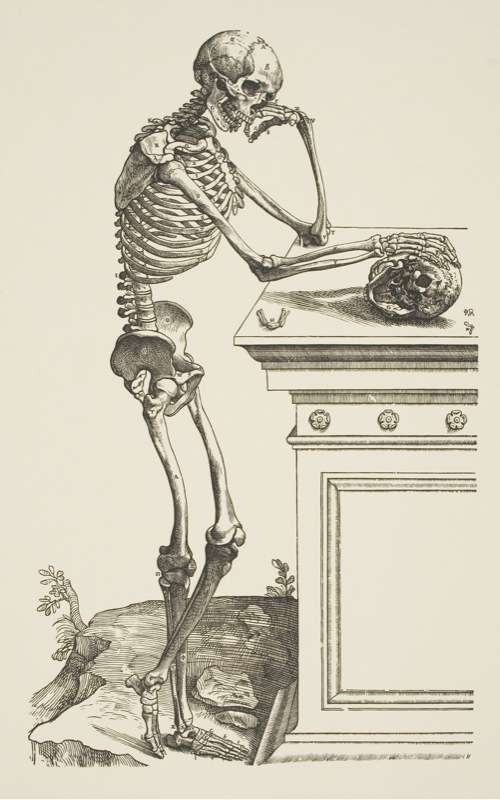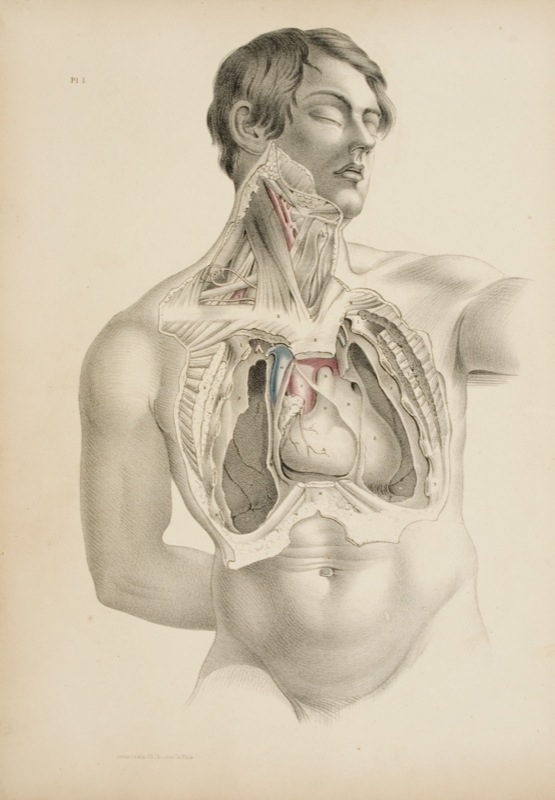

My friend Marie Dauenheimer just brought the upcoming exhibition "Anatomically Correct," a survey of medical illustration from 1543 to the present, to my attention. The show will be on view at "The Benton" (aka The William Benton Museum of Art) at The University of Connecticut from March 17 until May 1oth. It is really wonderful to see the explosion of interest in medical illustration and artworks over the past few years as exemplified by shows such as this one.
Full details:
March 17 – May 10For more information, visit "The Benton" exhibition website by clicking here.
Anatomically Correct: Medical Illustrations, 1543–2008
The Benton’s contribution to the University-wide “Year of Science 2009” celebration is an exhibition that chronicles the history of medical illustration through a selection of prints, drawings, computer graphics and animation from the 16th century to the present. Each piece articulates a unique union of art, anatomy and medicine, the works together reflecting the ways that union has evolved over the centuries and continues to thrive in an era of digital photography and 3-D imaging.
The works in Anatomically Correct come out of a pictorial tradition that was set in motion by the Belgian anatomist Andreas Vesalius (1514–1564). He conducted his dissections firsthand, breaking away from the longstanding authority of classical texts by relying on direct observation. He similarly reformed scientific illustration by insisting upon anatomical accuracy and precision for the plates in his pivotal work, De Humani Corporis Fabrica (On the Fabric of the Human Body) of 1543. These illustrations by the artist John Van Calcar divided the field of scientific illustration into “pre-Vesalian” and “post-Vesalian” periods. With Vesalius’s brilliant integration of image and text, illustration began to serve a crucial function in the communication of scientific information, initiating the role of scientific illustration as a record of the progress of science in general.
Along with Vesalius’s contributions, Anatomically Correct highlights significant post-Vesalian developments that carried his vision into the present. Illustrations from William Hunter’s The Anatomy of the Human Gravid Uterus (1774) played a vital role in establishing obstetrics as a field of medicine rather than a practice of midwives. A major advancement in print technology is represented by color lithography in Jean Marc Bourgery’s Atlas of Anatomy (1831–1854). A shift in the role of illustration from works of art in themselves to didactic tools can be seen in Henry Gray’s Anatomy: Descriptive and Surgical (1858), and the increased role of the computer in contemporary illustration is evidenced in the 3-D animation of the Connecticut-based XVIVO studio.
In a discipline we associate with objectivity and empiricism, the works in the exhibition consistently reveal themselves to be products of their respective social climates. Ideological and social conventions inevitably come through in the illustrations as anatomists and artist catered to their audience’s desire to see the body represented morally, socially, theologically.
Anatomically Correct commemorates the 200th anniversary of Charles Darwin’s birth. The exhibition is particularly relevant to this moment of celebration as a reflection on the advancement in the field of anatomy as a basis for the theory of evolution and as an acknowledgement of the role of art as critical to the way these advancements were visualized.
Exhibition curated by Eve Perry, M.A. candidate, Art History, 2009.
Thanks so much, Marie, for sending this along!
Images: Top: Andreas Vesalius (1514–1564), Skeleton Contemplating a Skull from De Humani Corporis Fabrica, 1543. Lent by the Hartford Medical Society. Bottom: The Form of the Thorax..., color lithograph from Joseph Maclise, Surgical Anatomy, Philadelphia, 1851. Hartford Medical Library.


3 comments:
Wonderful illustrations.
The Huntington Library and Gardens here in Pasadena CA also has a wonderful collection of original texts, drawings and physical items related to medical history. I'm not sure if it was a traveling or permanent exhibit, but I saw it over Christmas 2008 and it was amazing.
Yes! The Huntington Library collection looks amazing; I ran a story about that when it opened (You can see it here), but have not been able to visit it in person as of yet. Someday, I hope!
--Joanna
Post a Comment